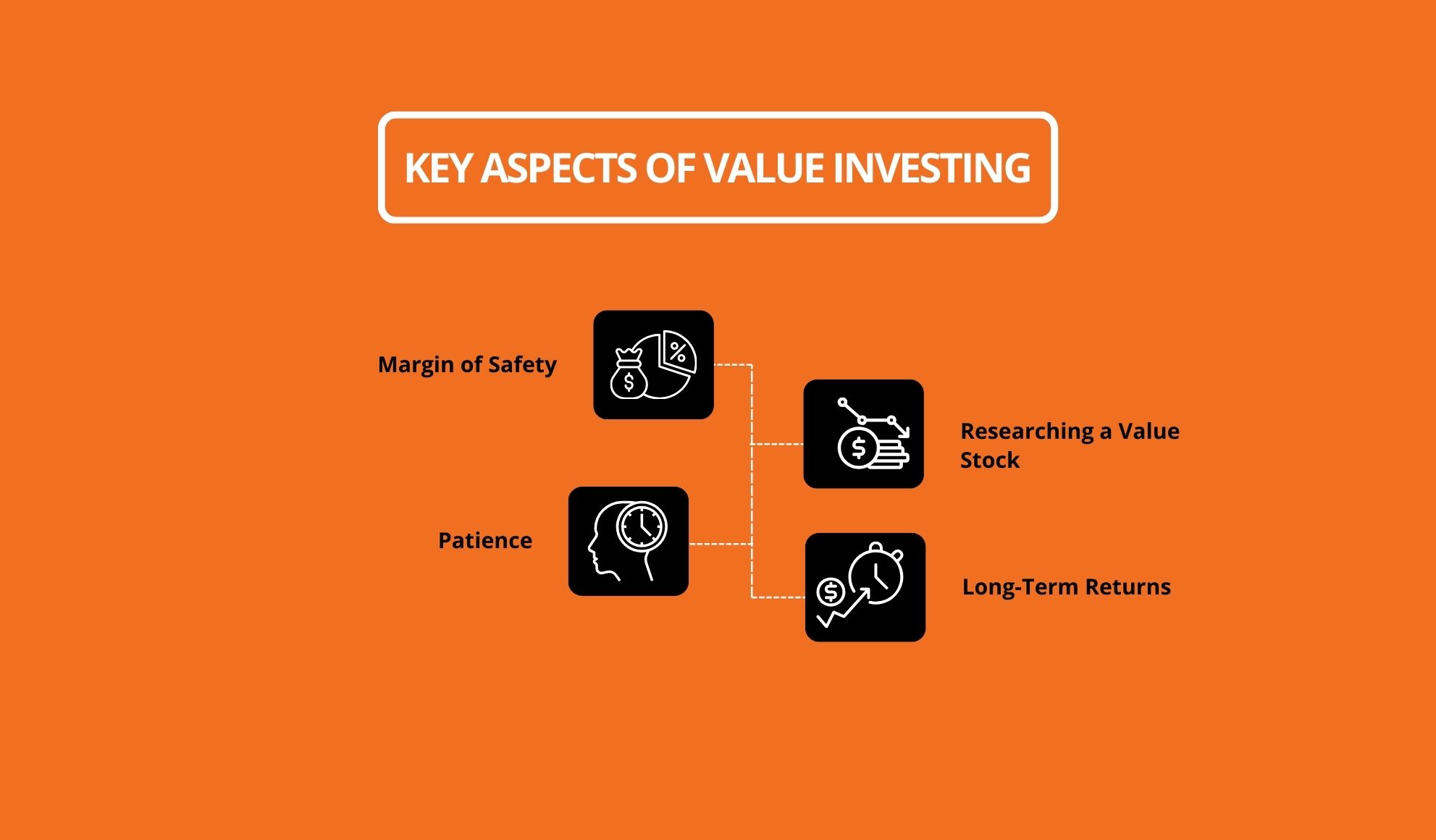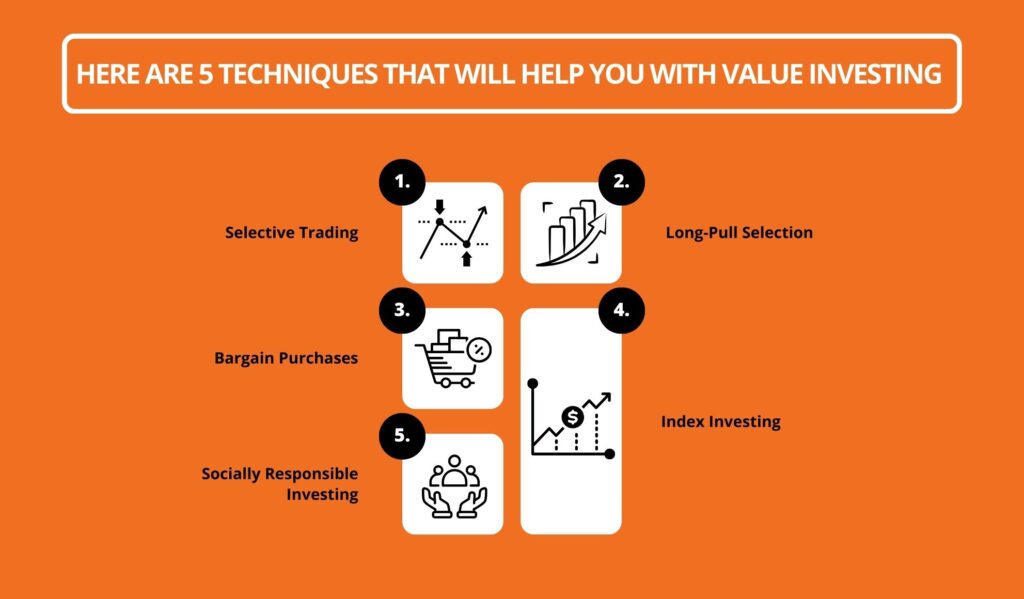5 Most Effective Value Investing Techniques in Stock Market
by Ankita Tripathy Investing Published on: 07 April 2022 Last Updated on: 08 January 2025

One of the best ways of growing your wealth over time is through investment. Popular investors and global leaders in the financial market have already paved the path for investors, introducing different investment techniques.
Value investing is one of those techniques that can prove immensely beneficial if you want to grow your investment over time.
Popularized by Warren Buffet, value investing is a strategy in which you actively pick out stocks that you think are trading for less than their book or intrinsic value at discounted prices on sale.
It can be loosely compared to buying electronics during sales instead of at full price.
What is Value Investing?
Value investing is a strategy where investors buy stocks that stay undervalued in the market. These stocks have a lesser price compared to the intrinsic value they possess. The goal here is to understand and identify stocks mispriced by the market.
However, these prices will eventually grow in value and price. The concept of value investing came into existence with Benjamin Graham and Professor David Dodd.
Both of them were professors at Columbia Business School. Graham also introduced the concept of margin of safety in his Intelligent Investor. Later, Popular investor Warren Buffet made this type of investment a popular thing.
Key Aspects of Value Investing

Every type of investment comes with some level of risk. Creating a safety net around your investment portfolio and planning is important. A strong safety net will ensure gains from your investment and reduce the chances of losing money. The following are some important aspects to consider for long-term success in value investing —
Margin of Safety
In value investing, there’s a listed price (current price) and an intrinsic value of a stock per share. As an investor, you must understand the difference between the current price and the inherent value. This difference is called as margin of safety. When a value investing stock has a higher margin of safety, it’s safer or less risky for investors looking for potential gain.
Researching a Value Stock
Value investing requires an immense level of research and an understanding of the stock and investment trends. It’s almost like having eyes that spot diamonds in a coal mine. As a value investor, one needs to be able to spot stocks that will eventually appreciate in value.
It’ll help to have an expert level of trading and investment skills. Plus, an investor must know how to track industry trends and management expertise.
Patience
Value investing would still require years. Some investors wait for ten to fifteen years for their stock price to go up. An investor has to have impeccable research, management, and investment skills to find a stock that will be appreciated after years.
But, most importantly, they need to have the patience to hold the stock for that long. So, patience is one key to success as a value investor.
Long-Term Returns
When you are putting in your patience, it’s also essential to be wise enough to accept the return you are getting. Not all long-term investments turn into a million-dollar amount in return. Sometimes, long-term value investments don’t appreciate the intrinsic value an investor thought. That’s why it’s critical to
Value investing can lead to above-average returns over the long term. So, while you can have high hopes, it’s best not to put it too high only to get disappointed at some point.
Here Are 5 Techniques That Will Help You with Value Investing

When it comes to making such investments successful, investors can use several techniques to improve their investment portfolio with value investing. We have outlined some of those techniques here –
1. Selective Trading:

This technique requires you to make informed and educated guesses since it means that you pick stocks that are poised to perform better than the market over a year or less. You need to keep track of factors such as government regulations, patents, competitive movements, etc.
2. Long-Pull Selection:

This mostly involves startups and newer companies that promise significant growth through their progress, business models, and other factors. They are often called “growth stocks”. Long-pull selection refers to investing in the prosperity of these enterprises over the years in comparison to the average company.
3. Bargain Purchases:

If you use this technique, you will pick out shares selling significantly lower than their true value based on measurement techniques. The most popular technique for finding out if a stock is overvalued or undervalued is the P/E (price-to-earnings) ratio.
The P/E ratio can be calculated by dividing the share price by the company’s earnings per share (EPS). The EPS is calculated by dividing company profits by outstanding shares.
For example, there is company X.
- It has made $1 million in profits with 1,00,000 outstanding shares.
- Its EPS would be $10.
- The share price is $40; hence, the P/E ratio would be 4.
What you need to do now is compare this P/E ratio with those of similar companies in the same sector.
4. Index Investing:

Index funds are passively managed and sold securities based on the same ones that an underlying index holds. This technique is appealing since it takes a minimal amount of work, charges low fees, provides diversification, and gives you returns in proportion to the market a particular fund tracks.
5. Socially Responsible Investing:

Back when online stock market investing did not exist, you could not conveniently open a Demat account. As such, socially responsible investing wasn’t quite popular but has come to grow in recent times.
You select companies that try to tackle social issues such as gender equality, racial equality, climate change, etc. while reaping returns as well.
You can always keep track of a company’s ESG (Environmental, Social, and Governance) rating and its position in the SRI (Socially Responsible Investing) index.
To Conclude
There is no correct answer to which techniques you should follow. Once you get into the habit of research and practice, you can rationally use data and facts in order to mitigate risks and maintain safety and liquidity.
However, remember that any type of investment has several levels of risk. Prepare yourself before putting your money into any assets, and it will always be helpful to discuss with experts before deciding to invest. Hopefully, you’ve found this article helpful. Thank you for reading.
Read Also:



































































































